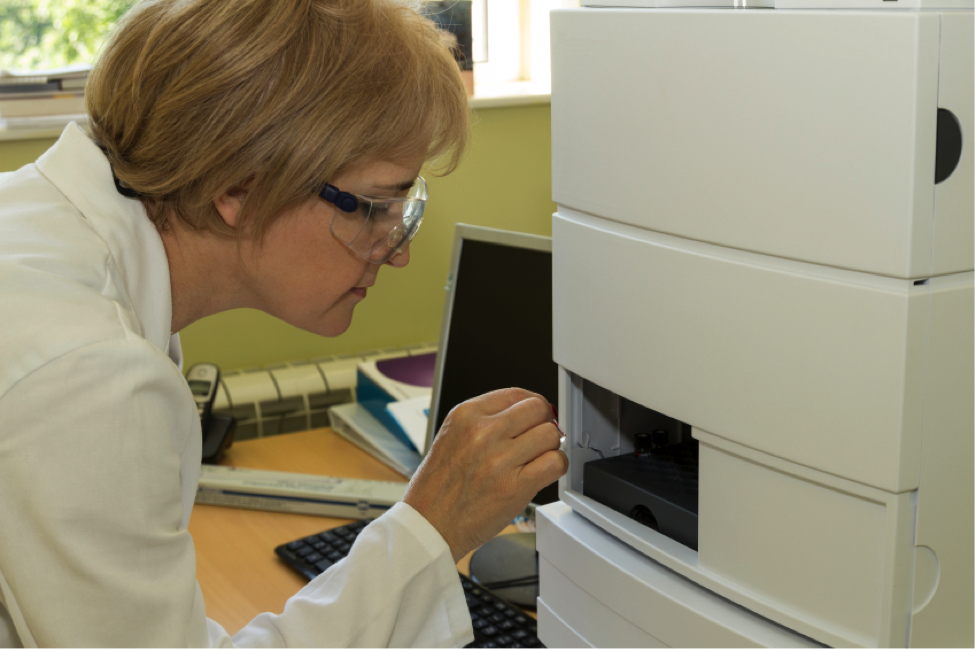
With HPLC training, you can take your pharmaceutical career to new heights by exploring opportunities in a range of fields, including in medical device manufacturing, healthcare and clinical research – among many other possible options.
If you are planning to enroll in HPLC courses, or you have recently started your program, read on to learn more about HPLC and how it works.
What is HPLC?
HPLC, or High Performance Liquid Chromatography, is one of the most common techniques used for separating and purifying organic and inorganic compounds in order to analyze them. Professionals in HPLC careers know that different compounds have different polarities. In fact, compounds can be polar—which means they have a slight positive charge on one end and a slight negative charge on the other—or non-polar.
For instance, water is polar because it has a slight positive charge near its hydrogen atoms and a slight negative charge near its oxygen atom. Because of this, it tends mix well with other polar compounds. However, a non-polar compound like oil would not mix well with water, or any other polar compound.
How HPLC Separates Compounds
As students complete their HPLC program, they will learn how to separate compounds through the following steps:
- Injecting the sample that will be separated
- Mixing the sample with a mobile phase
- Pushing the sample and mobile phase through a stationary phase
- Analyzing the separated compounds once they have passed through the stationary phase
The stationary phase of HPLC gets its name because it does not move while the solution passes through it. This phase is made up of tiny particles packed together and because these particles are non-polar, they will interact with the different compounds in the sample solution.
The mobile phase is usually made up of water or water mixed with another polar solvent such as acetonitrile. Since the mobile phase is polar, polar compounds will be attracted to it and pass through the stationary phase quickly. Non-polar compounds will take longer to pass through, and will eventually separate away from the polar compounds in the sample solution.
How Technicians Use and Interpret HPLC Results
Because of their varying polarities, different compounds will pass through the stationary phase at contrasting rates. This is referred to as the retention time, with polar compounds having a shorter retention time than non-polar compounds.
At the end of the HPLC system, a detector measures the separated compounds as they exit. This detector records when the compounds exit to determine their retention time, as well as how much of the compound was present.
Professionals with HPLC training can then interpret the results and use them for different purposes. For instance, in some research laboratories and other facilities, HPLC is used to collect pure compounds. In this case HPLC technician collect the desired compound so that it can be used.
However, in other cases, HPLC technicians use their training to determine the quantity of a particular compound for quality control purposes. Or, perhaps to detect trace amounts of certain compounds that might have a harmful effect and need to be removed.
Are you interested in enrolling in HPLC training courses? Visit AAPS for more information or to speak with an advisor.



